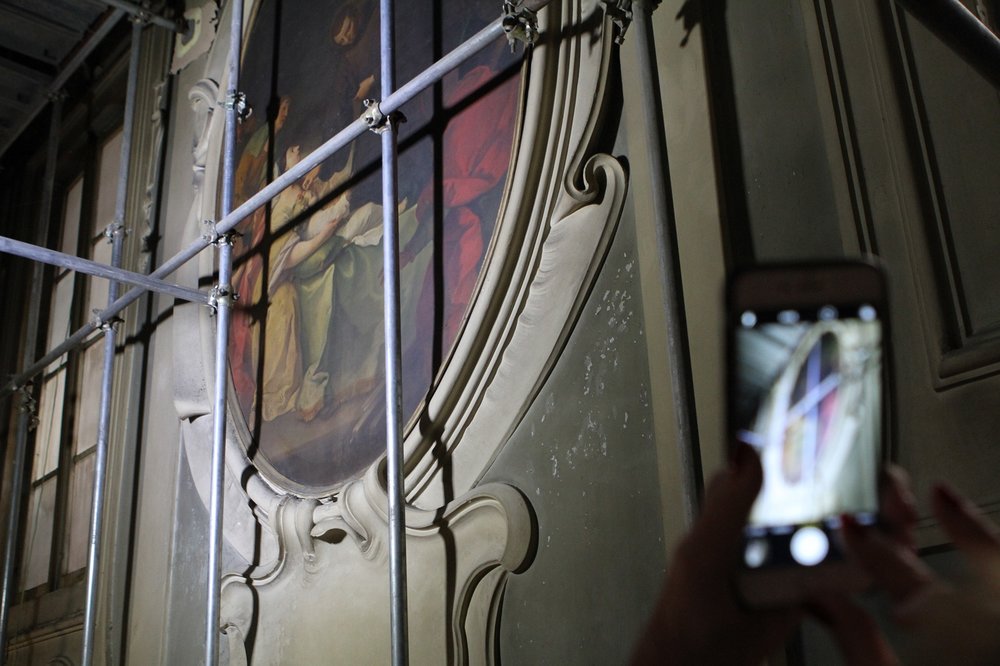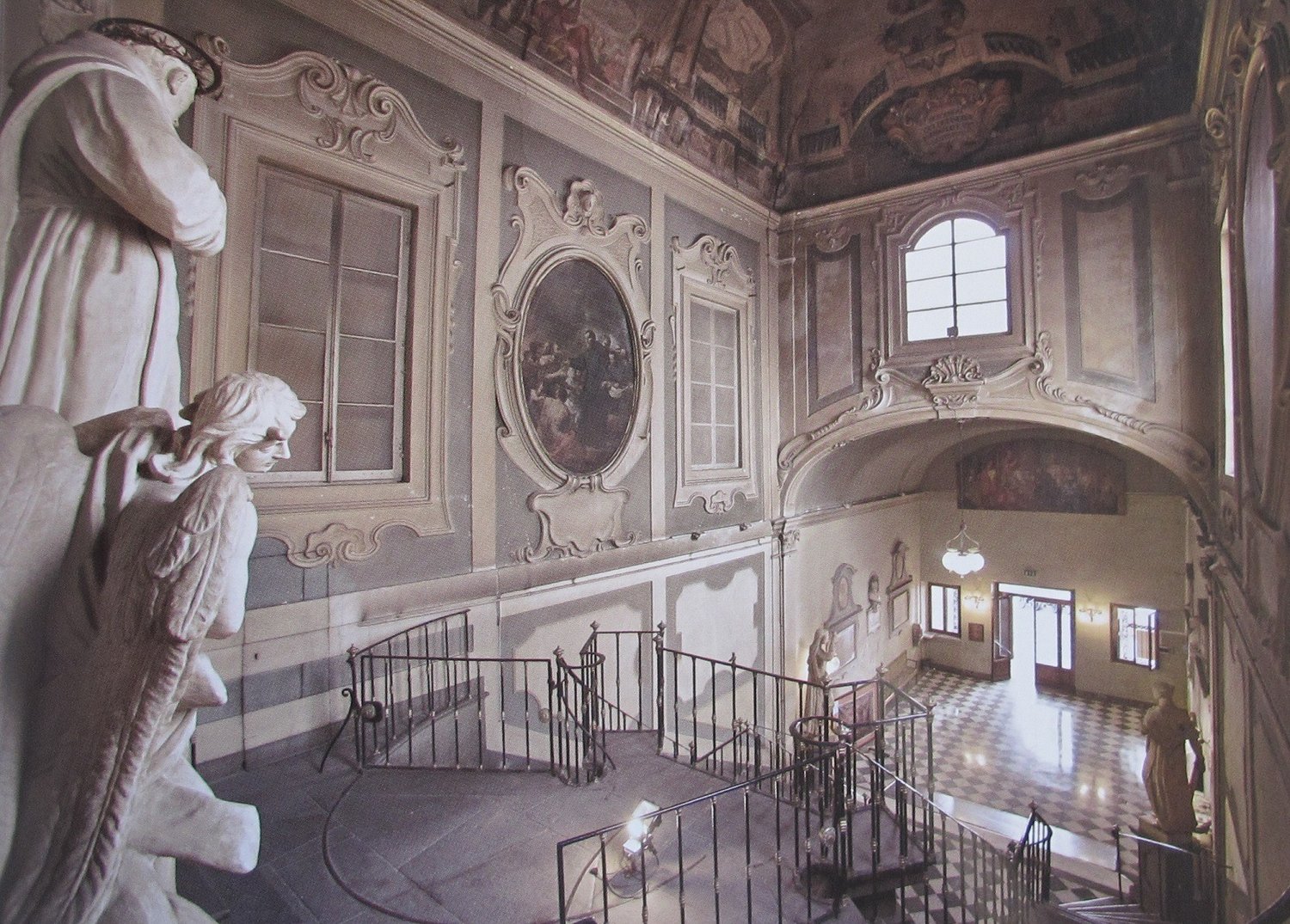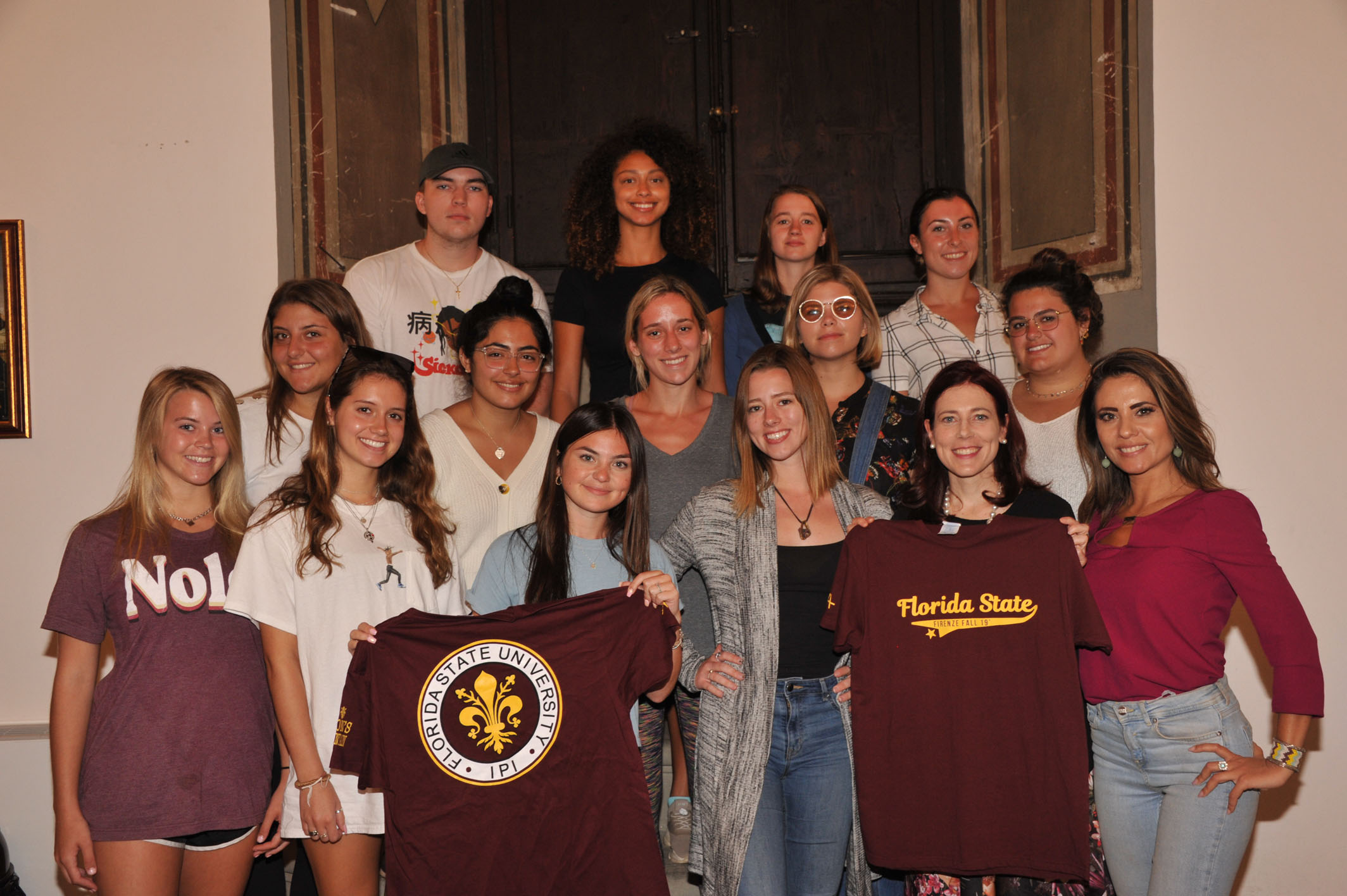In times of great upheaval, opportunities can present themselves. The mid-1700s were certainly a time of such change in Florence. Politically the Medici era was coming to an end and the basic infrastructure of the city was in a state of decline. Florence, like all of Europe, was slowly recovering from the devastating loss of life during the era of the Black Plague and, by the 1740s, a new census revealed that the city’s population was finally beginning to grow. Then, with the death of the last Medici ruler, control was in the hands of the Habsburg dynasty, bringing uncertainty about how Florence would fare in this new order. This was also the era of the “Grand Tour”, when Europeans were traveling widely through Italy, Greece and beyond. Thousands came through Florence bringing a renewed interest in its treasures despite the turmoil and shift in political fortunes.

Photographing Violante Ferroni’s painting at San Giovanni di Dio hospital, Florence
Enter a young woman, born to the aristocracy in 1720 and with a strong artistic talent: Violante Ferroni. Enrolled at the age of just 16 in the Accademia delle Arti del Disegno, an unusually young age for admission to the prestigious institute, Ferroni was able to study with several notable artists of that time, including Violante Siries Cerroti. While women of that era were occasionally able to carve out a career as an artist, their work was usually relegated to small-scale portraits and landscapes. Yet, in the 1740s, Ferroni was selected to create two 8 by 11.5-feet ovals depicting full-length figures and historic scenes with strong spiritual undertones that would hang in the recently renovated atrium of the San Giovanni di Dio hospital.
How did Ferroni win such a prestigious opportunity that more typically would have gone to a man? We know so little about this artist; this is one of the few works we can attribute to her. But we know she must have had a strong reputation and been a well-documented talent to be selected to have her work dominate the magnificent staircase in the hospital, a building that was once the home of the Vespucci family and the birthplace of Amerigo Vespucci, for whom the Americas were named. Until the 19th century, the atrium was a “makeshift” venue for religious functions. In the 1850s, a visitor to the hospital, which served the poor of the city, described how mass was celebrated in the atrium for “the convenience of the sick” and that the patients were “treated with singular solicitude”. Ferroni’s panels depicting Saint Giovanni di Dio ministering to plague victims and giving bread to the poor would have looked down upon this grouping as they said their prayers, possibly creating a mood of calm and hope.

The atrium at San Giovanni di Dio hospital, Florence
“We often think of the idea of displaying art in hospitals as a modern idea. In fact, the humanists truly believed that art and beauty had powers to heal both soul and body,” says Linda Falcone, director of Advancing Women Artists (AWA), a Florence-based organization that restores and exhibits art by women in Tuscany’s museums and churches. “This is one of the things that makes restoring this artwork, so exciting—it gives us a chance to rediscover that historic art is not made solely for museums. It should be part of our daily life, in sickness and in health, just as it was in Renaissance Florence. That’s why we are calling this project ‘The Art of Healing’.”
The organization is not alone in its efforts. Ferroni’s painting is the first to be restored as part of its new partnership with Florida State University in Florence, whose “next-generation mud angels” are taking AWA’s “Art Angel” program by storm.
The Mud Angels meet the Art Angels

November 1966 presented a different kind of upheaval in Florence: the horrific flood, when the Arno rose 11 meters covering the city in 600,000 tons of mud and water, along with the painful destruction of over 14,000 magnificent works of art. Students at Florida State University (FSU) had just arrived that fall for the school’s first semester abroad in Florence. Rather than return home when the river rose ravaging the city, they stayed and helped in whatever way they could. Today, they are still helping. This past summer and for the whole of 2020, FSU students intend to follow in the tradition of their “Mud Angel” alumni, as part of a student-run fundraising venture, where the money raised designing and selling t-shirts will be matched by a local business, The Lion’s Fountain, and used to restore the artwork Saint John of God Healing Plague Victims. New discoveries on Ferroni’s life are sure to ensue, as the best place to study the character and achievements of an artist is in the conservation studio—where under-drawing, ripensamenti and painterly style provide precious clues about art history’s forgotten artists as they await rediscovery, thanks to the efforts of “angels” who earn their wings today.





